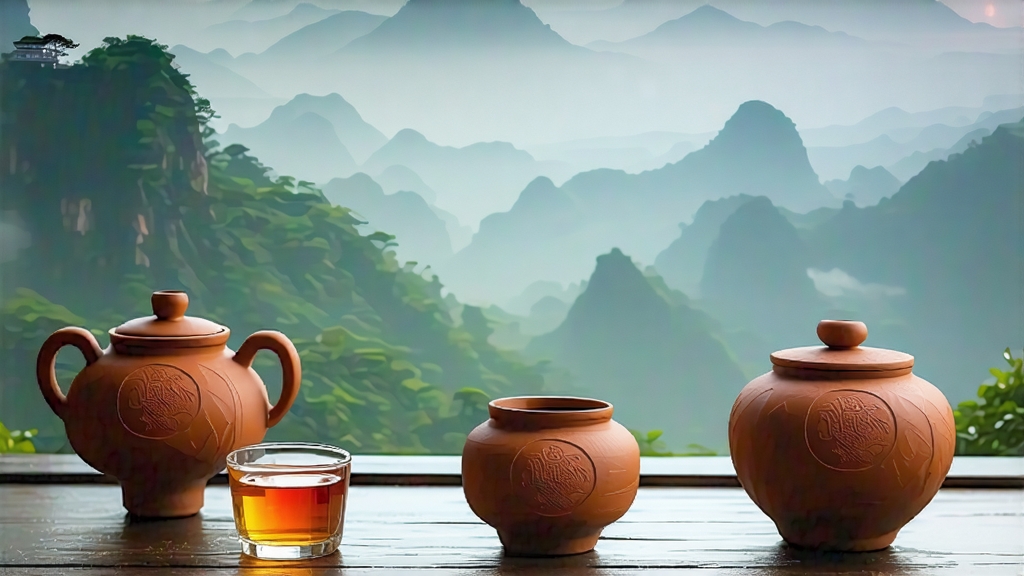
Tucked away in the southern folds of China’s Guangxi Zhuang Autonomous Region, where the Wu River slides through limestone karsts veiled in subtropical humidity, Liu Bao tea has quietly perfected the art of transformation for five centuries. To most Western drinkers “dark tea” begins and ends with Shou Pu-erh, yet Liu Bao is the older, subtler sibling that once rode the Tea-Horse Road southward to Malacca and Jakarta, paying for passage with its deep, camphor-sweet aroma and the magical ability to settle sailors’ stomachs on month-long voyages. Today the same tea is awakening curiosity among sommeliers who discover that a thirty-year-old Liu Bao can out-perform a first-growth Bordeaux in length and complexity, while remaining mercifully caffeine-gentle on the midnight palate.
History: From Imperial Tribute to Diaspora Comfort
The earliest written record appears in the 1585 edition of the Cangwu County Annals: “Dark leaves from Liu Bao village relieve dampness and are bartered for salt among boatmen.” By the Qing dynasty the tea had climbed the social ladder; Jiaqing Emperor (1796-1820) accepted it as spring tribute, awarding the six oldest families an official red seal still re-printed on modern wrappers. When the British opened Hong Kong as a free port, Cantonese clerks carried Liu Bao to Southeast Asia, where tin-mine coolies drank it to counter malarial humidity. In Kuala Lumpur’s Petaling Street the tea became known as “Kut-cha,” poured thick and sugary from brass kettles into tiny porcelain cups that cooled quickly in the equatorial heat. Thus a mountain tea became the taste of exile, a memory of fog carried inside steamy kopitiams.
Micro-terroirs: Three Valleys, Two Clones, One Fungus
Liu Bao is not a single recipe but a mosaic of micro-terroirs. The core is the village of Liu Bao itself, elevation 300 m, where red-yellow laterite soil rich in iron and aluminum forces the tea bush (Camellia sinensis var. sinensis, small-leaf clone GX-5) to drive roots deeper, concentrating polyphenols. Ten kilometres west, the Da Shan valley harvests two weeks later, yielding broader leaves with higher amino acids and a creamier body. A third, newer garden at 800 m on the Yun Kai plateau experiments with Yunnan Da Ye cuttings, producing a hybrid that ferments faster yet retains Liu Bao’s signature betel-nut note. Across all sites the unseen protagonist is Eurotium cristatum—Golden Flower mold—whose golden spores bloom during post-fermentation, exuding a faint orchid-cereal scent that perfumers compare to basmati rice toasted in brown butter.
Craft: The Six Acts of Transformation
- Pluck: two leaves and a bud around Qingming, when spring mist dilutes sunlight and raises L-theanine.
- Wilt: 4–6 hours on bamboo trays stacked like organ pipes inside drafty sheds; moisture drops to 65 %.
- Kill-green: 280 °C drum roast for three minutes, just enough to halt oxidation while preserving leaf enzymes vital for later microbial drama.
- Rolling: dual-phase—light kneading to rupture 30 % cell walls, followed by twenty minutes of “dragon-boat” rocking that twists leaves into tight strips.
- Sun-dry: spread on reed mats for two full days, turning every hour so that ultraviolet light photo-modulates catechins into smoky quinones.
- Wet-piling: the heart of Liu Bao identity. Leaves are sprayed with Wu River water (pH 6.8, mineral hardness 120 ppm), then piled 70 cm high under rattan covers. Temperature is allowed to rise to 55 °C over ten days; every 48 hours the pile is turned, aerating and re-humidifying. Unlike Shou Pu-erh’s 45-day piles, Liu Bao’s shorter, cooler fermentation preserves more leaf substrate, yielding a softer, less earthy cup. After piling the tea is steamed, pressed into 40 kg wicker baskets lined with bamboo skin, and left to age in riverside caves where relative humidity hovers at 85 %. Here time performs final alchemy: tannins polymerize, bitterness ebbs, and a luminous ruby liquor emerges.
Aging Lexicon: How